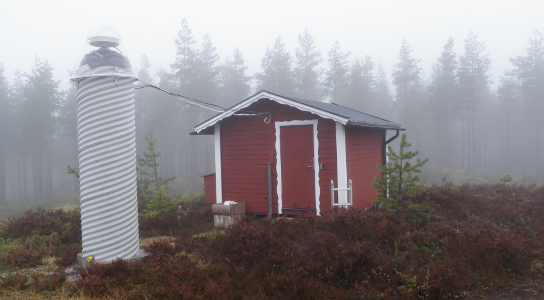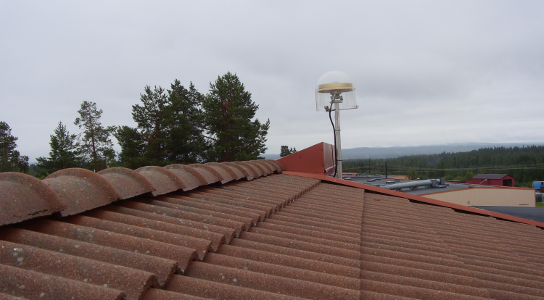Contents of this page may be automatically translated, we take no responsibility for the accuracy of the translation. Feel free to contact our customer support centre if you have any questions.

The Swepos stations are permanent reference stations that are built for continuous GNSS measurement at a stable and well-defined position.
Classification and equipment
The Swepos reference stations are equipped with GNSS receivers that receive signals from all current GNSS systems. The satellite observations are then forwarded via the internet to two geographically separated data centres. This is ongoing every second, all year round.
The Swepos stations are divided into two categories - class A and class B - based on the requirements for coordinate stability and spare capacity. In the Swepos map (new window) you can see where the stations are located.
All equipment at the reference stations is maintained and upgraded continuously. New GNSS antennas are always tested before being installed at a station.
Class A stations

Class A stations have the best long-term coordinate stability because the GNSS antennas are mounted on insulated concrete pillars or truss masts with fixed anchorage in crack-free bedrock.
Other equipment at the stations is installed in some type of technology shed. There is good redundancy for GNSS measurement, data communication and power supply, i.e. spare capacity that is activated in the event of problems.
The Class A stations include the 21 so-called fundamental stations that realize our national reference system SWEREF 99. Class A stations are also used to monitor the coordinate stability of the class B stations.
Class B stations

Class B stations are densifying the network of class A stations in the expansion of the Swepos network to increase real-time measurement capacity. Therefore, the class B station is the most common type of station and makes up about 90% of the Swepos network.
The class B stations have GNSS antennas that are roof mounted on buildings and do not have the same redundancy as the class A stations, regarding the equipment.
The coordinates of the stations are checked by daily calculations, e.g. to detect any movement.

